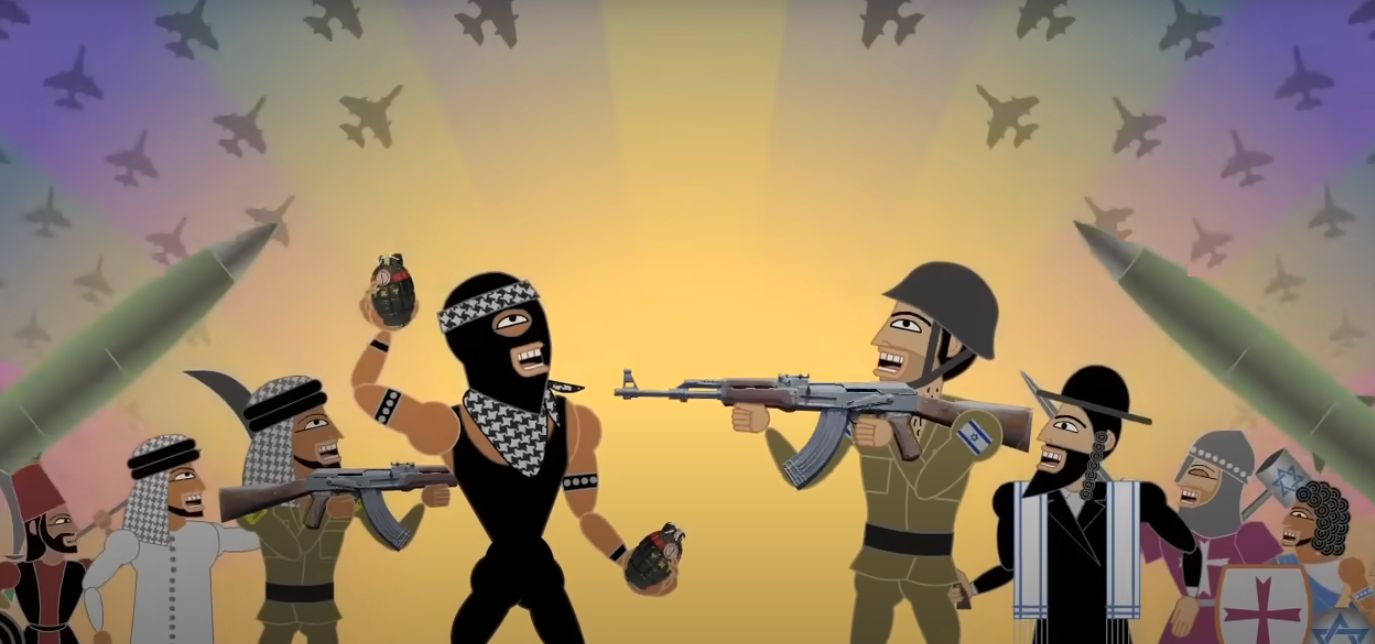Reading: The History of the Holy Land
Ancient Times
The land between the Mediterranean Sea and the Jordan River has a very long history. This area was called Canaan in ancient times. People have lived here for thousands of years because there was water and good farming land.
Around 3,000 years ago, different groups of people lived in this region. The Israelites created kingdoms here, including the famous kingdoms of Israel and Judah. King David and King Solomon are well-known rulers from this time. They built the First Temple in Jerusalem, which became very important for the Jewish people.
Other groups also lived in the region. The Philistines lived on the coast, and the Canaanites were already there before everyone else. These different peoples sometimes fought with each other, but they also traded and lived together. Archaeological discoveries show us how these ancient people lived.
Later, powerful empires came to control the land. The Babylonians destroyed the First Temple in 586 BCE and took many Jewish people away. Then the Persians, Greeks, and Romans all ruled this region at different times. Each group left its mark on the land and the people who lived there.
Religious Significance
This region is special because three major religions consider it holy. For Jewish people, this is where their ancestors lived and where the ancient temples stood. The Western Wall in Jerusalem is the last remaining part of the Second Temple and is very important to Jews around the world.
Christians believe that Jesus Christ was born in Bethlehem, which is in this region. He grew up in Nazareth and taught in many places around the area. Jerusalem is where Christians believe Jesus was crucified and later came back to life. The Church of the Holy Sepulchre marks this important location.
For Muslims, Jerusalem is the third holiest city after Mecca and Medina. The Dome of the Rock and Al-Aqsa Mosque are located on the Temple Mount. Muslims believe that the Prophet Muhammad traveled from Mecca to Jerusalem and then to heaven from this spot. This event is called the Night Journey.
Because of this religious importance, millions of pilgrims visit the region every year. People from all three religions come to pray at their holy sites. This makes the land very special, but it also makes it complicated when different groups want control of the same places.
Empires and Rulers
After the Romans destroyed the Second Temple in 70 CE, most Jewish people had to leave the region. This is called the Diaspora. However, some Jewish communities always remained in the land. The Romans renamed the region "Palestine" after the ancient Philistines.
In the 7th century, Arab armies brought Islam to the region. For the next 1,300 years, the area was mainly ruled by Muslim leaders. Different dynasties controlled the land, including the Umayyads, Abbasids, and Fatimids. During this time, Arabic became the main language, and many people converted to Islam.
Between 1096 and 1291, European Christian armies came to the region during the Crusades. They wanted to control the holy sites. The Crusaders captured Jerusalem for a while, but Muslim leaders like Saladin eventually took it back. These wars caused a lot of suffering for people living in the region.
From 1517 until 1917, the Ottoman Empire ruled the region. The Ottomans were Muslims from Turkey. During their rule, the population included Muslims, Christians, and Jews living in different communities. When World War I ended, the British took control of the area.
Modern Era
In the late 1800s, a movement called Zionism started in Europe. Jewish people who faced persecution wanted to return to their ancient homeland. They began moving to Palestine in small numbers at first, then in larger groups.
At the same time, Arab people who had lived in Palestine for many generations were developing their own national identity. They saw the land as their home too. When more Jewish immigrants arrived, especially after the Holocaust, tensions grew between the two communities. Both groups wanted control of the same land.
In 1947, the United Nations suggested dividing the land into two states - one Jewish and one Arab. Jewish leaders accepted this plan, but Arab leaders rejected it. In 1948, Israel declared independence. This led to a war, and many Palestinian Arabs became refugees.
Today, the situation remains complicated. Israel is an established country, but Palestinians want their own state. There have been several wars and many attempts at peace. Both Israelis and Palestinians have suffered. Many people around the world hope that one day both peoples can live safely and peacefully in the land they both call home.
Video: The Holy Land Explained
Holy Land Vocabulary
Holy Land Vocabulary Quiz
Writing Exercise
UN Speech: Your Solution
Write a speech at a UN meeting explaining your solution to the conflict in this region. Use as many terms you have learned in today's lesson.
Remember, there are no bad opinions, only bad English!







